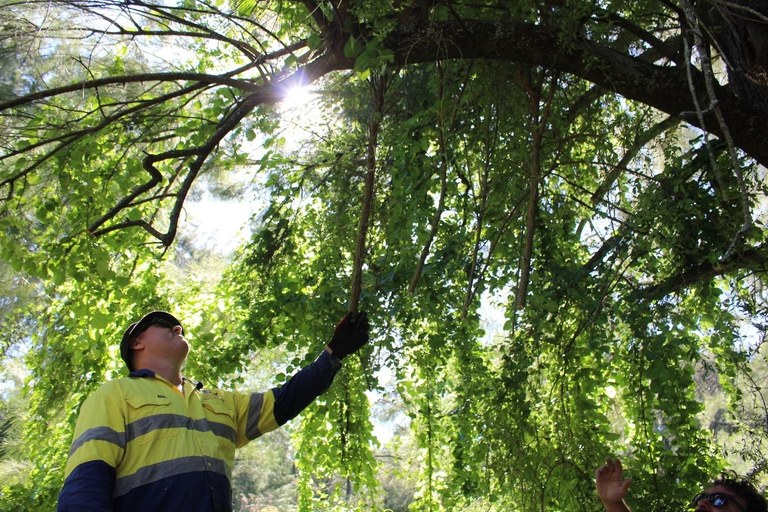
Apical Delivers final Weeds Workshop in Araluen Creek Series
In Landcare, we've seen that if we don’t deal with our weeds early, they can become entrenched and much harder to manage. It's therefore important to know what weed threats are emerging and the best ways to deal with them. To address this issue, on Saturday 25 February 2023, Upper Deua Catchment Landcare and USLC hosted their second workshop on practical weed control at the Araluen Campground. This workshop was the final instalment in the Araluen Creek Restoration series, bringing back weed expert Daniel Anderson of Apical and assistant Jake Proust. This time the focus was on an emergent creeper in the Valley - Madeira vine - as well as blackberry and invasive grasses.
Madeira vine (Anredera cordifolia)
This significant environmental weed in New South Wales has only been recently detected in the Araluen Valley. The creeper can grow from tubers, stems or leaves and is very difficult to remove unless tackled early. Once established in a tree or shrub, the vine will continue to spread through the canopy and eventually smother it. Daniel said: “In this case it's not just about weed management, it's about protecting a 150 year old asset - the tree”.
Daniel recommends 'skirting' or cutting a 1.5 metre gap between the ground and the climbing creeper, removing any low branches to limit the vine's access to the canopy. Then, using a mix of control measures, stop the emerging shoots from ascending up trees and shrubs.
Blackberry (Rubus fruticosus species aggregate)
Daniel advocates using the “splatter" approach for blackberry, ideally before it starts to flower in spring. Using a drenching gun, or wide droplet-size on your spray pack, squirt out lines of concentrated spray across the bush (think Jackson Pollock's "Blue poles" painting). Jake indicated "with a 10% chemical dosage, you only need around 10% plant coverage to be effective, so your spray goes a long way with this technique". If the infestation is wider than the splatter gun will reach, mow or brush-cut tracks through the thicket to gain access.
African lovegrass (Eragrostis curvula)
It is only worthwhile tackling African Lovegrass when it's green and actively growing in spring-summer. Daniel recommends cutting and spraying invasive grasses, with minimal disturbance to the soil to reduce seed set. Either slash or brush-cut the tufts down to a base and immediately apply spray. There's around a 30 second time-window for the plants to effectively absorb the chemical, so consider tag-teaming - one person cut and other apply product.
Key takeaways:
- Controlling weeds is a journey: After initial attempts to kill or remove weed outbreaks, make sure you go back to manage any reshoots/seedlings over time. Secondary or follow-up maintenance is critical.
- Bite-sized projects: Take on projects that are realistic and achievable in your timeframe and budget. Only commit if you can see the project through to completion, including any follow-up maintenance required.
- Pick your battles: Prioritize your weeds and tackle the biggest threat first.
- Top-down approach: If possible, always start weed control at the top of your catchment, to limit weed seeds down stream.
- Invest in additives: When used correctly, spray additives or bio-oils like Synertrol, boost success rates and improve chemical efficiency by helping sprays stick to target plants and increase absorption.
Interested in more detailed information sheets for creepers, blackberry and weed grasses from the workshop?
Contact upper.shoalhaven@gmail.com




